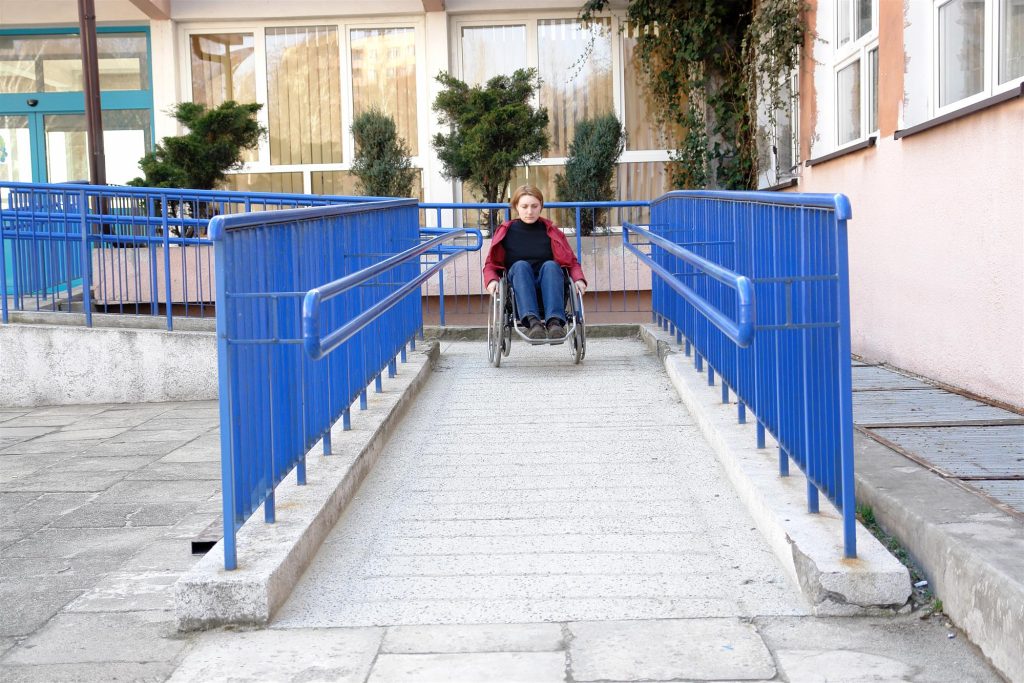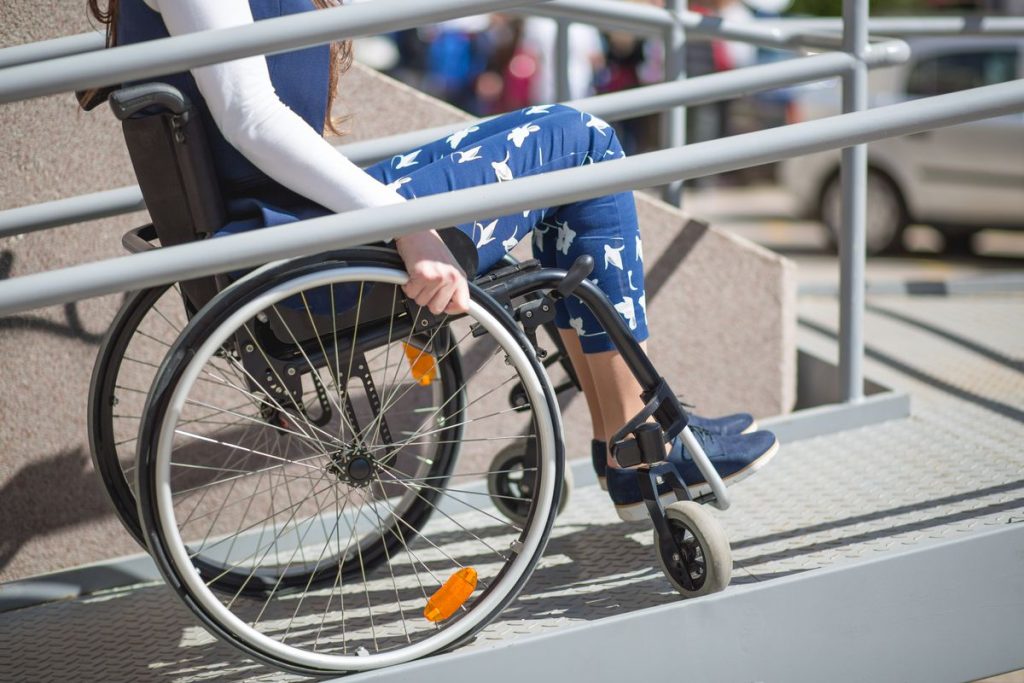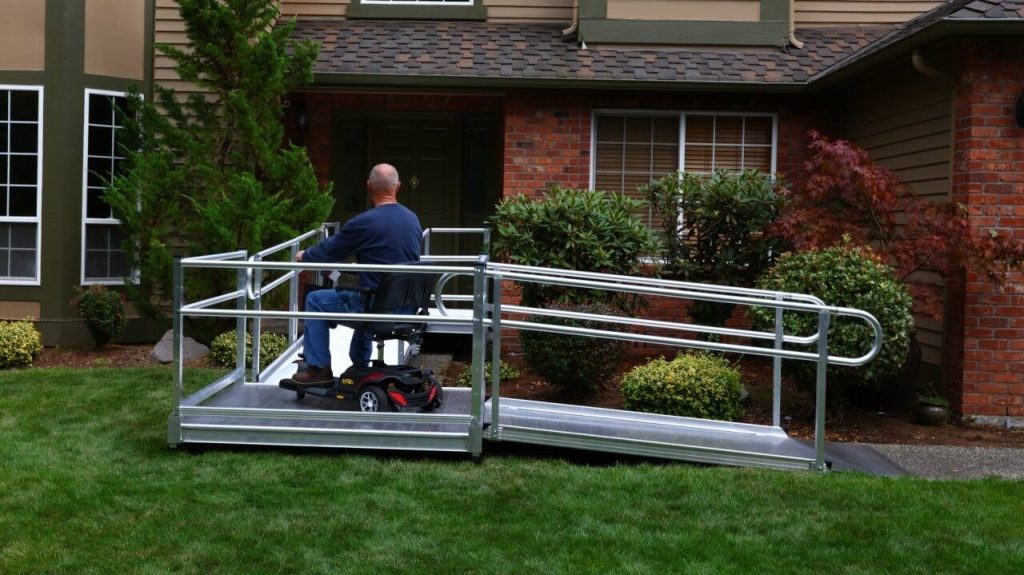For folks living with disabilities, everyday tasks are challenging and require additional planning and support. From using the bathroom to shopping for groceries, many things that others take for granted can be difficult when you have a disability. One such task is navigating the built environment, which is typically filled with barriers and obstacles that hinder their mobility and independence.

Choosing a sturdy and durable disability ramp can make a significant difference in your ability to access public spaces, buildings, and private homes. These devices come in a wide range of designs and materials, and the right one for you will depend on your type of disability, unique needs, and the environment. In this post, I’ll share with you some practical steps to choosing the right ramp for your needs.
Material
What is the best material for disability ramps? Factors like durability, weight, and cost affect the choice you make, so it’s necessary to understand the pros and cons of each material before deciding. The following are some of the more common choices:
- Aluminium ramps are lightweight and easy to move around, making them a great choice. They’re also weather-resistant and require little maintenance, making them a durable option for long-term use;
- Steel is extremely strong and durable, making it a good choice for permanent installations. However, they can sometimes be heavy and difficult to move;
- Wooden ramps can be a good choice for a more natural look, and they’re relatively inexpensive. However, they require more maintenance than other materials and aren’t as durable over the long term.
Traction
The disability ramp and its level of traction affect safety and ease of use for people with disabilities, especially those who use mobility aids like wheelchairs or walkers. Ramps have different types of surfaces to provide traction. For example, some of them have a raised surface texture or a non-slip coating to provide extra grip. This is especially useful in wet or slippery conditions, such as during rain or snow.

Another factor to consider is the angle of the model in question. The steeper the angle, the more difficult it is to climb for some people. Models with a steeper angle also provide less traction, as there’s less surface area in contact with the ground. It’s essential to choose a model with a slope that’s safe and comfortable for the user.
Additionally, don’t forget to consider the type of mobility device that you’re using. For example, some wheelchairs or scooters require more traction than others, depending on the size and weight of the device. This will assist you with choosing a model with the right level of traction to accommodate the mobility device that you will use on it.
Weight and Width of Your Device
Different mobility devices have different weight capacities, so it’s crucial to choose a specialised ramp that can support the weight of your device. For example, a manual wheelchair typically weighs less than a power wheelchair, so you’ll need a lighter weight ramp for a manual wheelchair.
When choosing a ramp based on weight, be sure to consider not only the weight of your wheelchair or scooter, but also any additional weight that will be added, such as your weight and any accessories or equipment that you’ll attach to it. The width of your device can also affect the size and type of temporary disabled ramp you need, as well as the overall safety and ease of use.
Different mobility devices have different widths, so it’s a must to choose a model that’s wide enough to accommodate your device. If it’s wider than the ramp, it’ll be difficult or unsafe to navigate, and can even pose a risk of tipping over. You should also consider any additional space that you’ll need for manoeuvring the device on and off the ramp. For example, if you need to turn your wheelchair or scooter to get on, you’ll need a wider model or additional space around it to safely manoeuvre.
Height of Your Steps
When it comes to choosing a handicap ramp, one of the most critical factors to consider is the height of the steps that you need to navigate. The height of your steps will determine the slope of the model you should pick and how long it will need to be.

If your steps are only around 10-20cm high, you’ll only need a slight incline to make the area accessible, and a shorter ramp will be enough. However, if your steps are higher, you’ll need a steeper model, which will require more space to set up.
It’s important to choose a device with a slope that’s not too steep, as this can make it difficult for individuals with mobility issues to navigate safely. A slope of 2:30 is considered the maximum slope for most types of ramps. This means that for every 2 cm of rise, the device should be at least 30 cm long.
To Sum Up
In conclusion, choosing the right portable disabled ramp is crucial to ensuring safe and accessible navigation. By considering factors such as the height of your steps, slope, width, weight capacity, surface texture, and material you can select a ramp that meets your unique needs and requirements. So, make an informed decision that will help you carry out your daily tasks in a safe and practical way!












